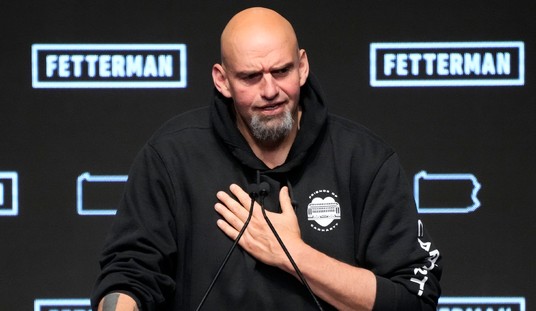The Affordable Care Act (ACA) was predicated on what is sometimes referred to as a three-legged stool. If any one of the legs breaks or is removed, the stool topples along with anyone using it. The first leg is insurance regulations that guarantee everyone access to coverage regardless of pre-existing conditions. In addition, premiums cannot vary by health risk.
The regulations (that is, guaranteed issue/community rating in industry parlance), are an attempt to increase cross-subsidies in health insurance. The idea is to force the young to subsidize the old and the healthy to subsidize the less healthy. Of course, these conditions are never stable; they require coercion to maintain. Thus, the second leg is an individual mandate requiring everyone to have health coverage -- even if the coverage is a poor value. Finally, the third leg is subsidies to help those who cannot afford coverage on their own.
Without a mandate, healthy people have an incentive to remain uninsured until they become sick or need a medical procedure. Say, a young woman who is perfectly healthy and then becomes pregnant. She signs up and gets $30,000 worth of care for the price of a few months in premiums before dropping coverage once her baby is born.
There are numerous perverse incentives built-into Obamacare. It is common sense that the people who would most want to enroll in Obamacare are those whose health status is such they can anticipate to receive coverage far cheaper that their expected costs. These individuals will consume medical care far more than their premiums cover. By contrast, the least likely to enroll are those young, healthy people. Lacking health concerns, they were always the least likely to think they needed health coverage.
Keep in mind, about half the population spends little if anything on medical care during the year -- accounting for less than 3 percent of medical expenditures. The remaining 50 percent of the population consumes 97 percent of medical spending. Indeed, the healthiest 80 percent of the population only consumed 20 percent of medical care.
Recommended
Obamacare made most people worse off by design. The federal law was predicated on forcing the healthy 80 percent to pay far more than their expected costs in order to shoulder more of the cost for the sickest 20 percent. This is why in most states the Affordable Care Act is in a death spiral -- a phenomenon where sick people sign up in far greater numbers than healthy people. With more unhealthy individuals, premiums shoot up causing even more healthy folks to drop coverage.
It’s not working. In February the Centers for Medicare and Medicaid Services (CMS) proposed a Market Stabilization Rule to address the Obamacare death spiral through a number of fixes. Specifically, the proposed rule would:
- Reduce the annual open enrollment period from 60 days to 45 days.
- Tighten the rules for special enrollment by requiring timely verification of qualifying events, such as marriage, change of employment or a long-distance move.
- Replace the three-month grace period for nonpayment of premiums with a 12-month look-back to prevent people from gaming the system.
In addition the proposed rule would also…
- Allow insurers to reduce the number of “essential community providers” included in their networks from 30 percent to 20 percent.
- Broaden the range of actuarial values insurers must cover based on projected costs.
But more is needed. While the rule moves in the right direction, CMS should consider strengthening it with the following changes:
- Reduce open enrollment to 29 days, as in the Federal Employee Benefits Health Program.
- Require continuous coverage with no gap longer than 30 days for special enrollment periods when people change jobs or marry, as in the employer-based market.
- Require state-based exchanges to enforce the same regulations on special enrollment as the federal marketplace, HealthCare.gov.
- Clarify the legal basis in the ACA for requiring enrollees who are delinquent in their premium payments to pay up to 12 months of overdue premiums before being enrolled in the next year’s plan.
The proposed Market Stabilization rule is an improvement over the previous administration’s ACA regulations. However, it is not possible to fix Obamacare by rulemaking alone. For instance, minor changes to actuarial value standards cannot change the fundamental problem with actuarial value defined by the ACA. New legislation is required.
However, these proposed market stabilization rules assume the Administration wants to prop up Obamacare. With the withdrawal of the American Healthcare Act the Administration may decide to undermine the ACA. If Congress (and the American people) are afraid to repeal Obamacare, why not let it fail?
How to Destroy Obamacare
Gene Sperling and Chris Jennings had an article in The Atlantic a few days ago that had a check list of six things that -- if done – would indicate attempts to sabotage Obamacare. These include:
- Use the ‘bully pulpit’ to beat up on Obamacare
- Discouraging further enrollment.
- Not enforcing the individual mandate.
- Not maintaining cost-sharing reduction payments.
- Undermining risk-sharing / risk-adjustment provisions that protect the insurance market.
- Weakening the so-called essential health benefits of insurance
The Trump Administration is already using the Bully Pulpit. Trump could order HHS to reduce funds for outreach, which could be seen as a form to discourage enrollment. The Administration has already told the IRS that it should use all its power to stall enforcement of the individual mandate. The IRS announced it would not reject returns that failed to report health coverage.
All the Administration has to do to implode the market is stop the appeal of the cost-sharing reduction payments. A federal judge already found them to be illegal since they were never appropriated by Congress. Insurers are required to pay them whether or not they get reimbursed by the federal government. All insurers would drop out – arguing breach of contract.
The Cromnibus Act of 2014 forced Risk Corridors -- the risk sharing program -- to be budget neutral. Insurers received only about 12 percent of the funds they thought they would. The remaining risk-sharing programs are mostly temporary anyway.
Finally what some refer to as insurance protections (i.e. essential health benefits) are really mandated benefits that not all enrollees are willing to pay for. They are largely designed to cross-subsidize those who want them by those who may not.
There is no technical fix that will magically save the ACA. I’ve been saying for years that whether you are a supporter or an opponent, Obamacare requires fundamental reform. Sooner or later something has to be done.
This commentary was based on a NCPA policy report by John R. Graham and a presentation by Devon Herrick at a Capitol Hill briefing in the Rayburn building on March 31st.
























Join the conversation as a VIP Member